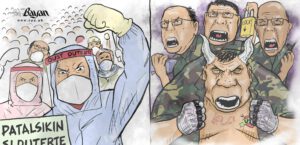The unremitting reign of political dynasties

Philippine politics has long been dominated by dynastic families at all levels.
Election results in 2019 indicate that around 163 families have at least two members who are simultaneously seated as senator, congressman or governor. Eighty-eight of these families are from Luzon, 29 from Visayas, and 44 from Mindanao. The results reflect data during the 2013 elections wherein about 169 out of the 200 district representatives were members of dynastic families who have been in power since the 1970s.
In the current Congress, 14 out 24 senators and 162 out of 300 representatives are from dynastic families. Approximately 18 political dynasties have at least two members seated simultaneously in Congress, in addition to six married couples. Sixty-two percent or 153 out of 247 district representatives are dynasts. Nine partylist representatives are also from dynastic families.
Meanwhile, 60 out of 81 governors in the country are dynasts. In sum, they have 108 relatives who are also seated in various local government posts as vice governors, board members, mayors, vice mayors and councilors.
Aside from Rodrigo Duterte, the heads of both Senate and Lower House are from dynastic families as well. The Senate is currently being headed by Sen. Vicente Sotto, a fourth generation dynast from a Cebu-based dynasty. The Lower House, on the other hand, is headed by Rep. Alan Peter Cayetano, a 2nd generation dynast from Taguig City. Mark Villar from the Aguilar-Villar dynasty of Las Piñas City was also appointed by Duterte as his cabinet member. Four other members of this family are seated in highest elective positions in the local government of Las Piñas, while another was appointed as undersecretary. The Singson dynasty of Ilocos Sur has the highest number of members in government with 14 members. The Dys of Isabela, Ortegas of La Union, and Matugases of Surigao del Norte also have 9 members each seated in elective posts.
Political dynasties are a legacy of Spanish colonizers in the country. Dynasts consolidated the rule of American colonialists by ensuring the colonizers’ interest while administering the the emergence of a Filipino government. The power and wealth bestowed by colonizers upon these families ensured their unremitting rule of in succeeding decades. In exchange, they played a key role in perpetuating the semi-colonial character of Philippine society in favor of their colonial masters, as well as the semi-feudal system which ultimately benefit them.
In the succeding century, these families used their positions to acquire and accumulate money, land, businesses and properties, as well receive favor from other landlords, bourgeois compradors and their fellow bureaucrat capitalists. This has not changed despite the conduct of elections in past decades after the Marcos dictatorship was overthrown. In fact, 86 more dynasties emerged since the People Power in 1986. This families include the Binays of Makati, Andayas of Camarines Sur and Cuas of Palawan. This is in addition to 71 dynastic families which have reigned even before martial law.
By perpetuating their reign, they are able to aggrandize themselves and use their power to corner the biggest loot, bribes and cuts from government contracts. Dynasts use their political capital to promote their family businesses or those of their other relatives, friends and allies, as well as gain favors from contractors, loan agencies, foreign capitalists and banks. Public economic resources, instead of benefiting the people, are diverted and concentrated into the hands of these political dynasties.
Most dynasts in backward provinces also happen to be warlords who maintain large private armies. They cultivate loyalties among military and police officers to protect their businesses and criminal syndicates and suppress anyone who challenge their rule.

